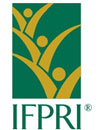Main menu
- Home
- Research
- Public Dialogue
- Publication
- Annual Economic Report
- Economic Focus
- Ethiopian Journal of Economics
- Newsletter
- Research Brief
- Conference Proceedings
- Annual conference
- International Conference
- First International Conference
- Second International Conference
- Third international conference
- Fourth International Conference
- Fifth International Conference
- Sixth International Conference
- Seventh International Conference
- Eighth International Conference
- Ninth International Conference
- Tenth International Conference
- Fifteenth International Conference
- Regional Conference
- Quarterly Macroeconomic Report
- Research Report
- Working Papers
- Training
- Information
- Membership
- Media

















